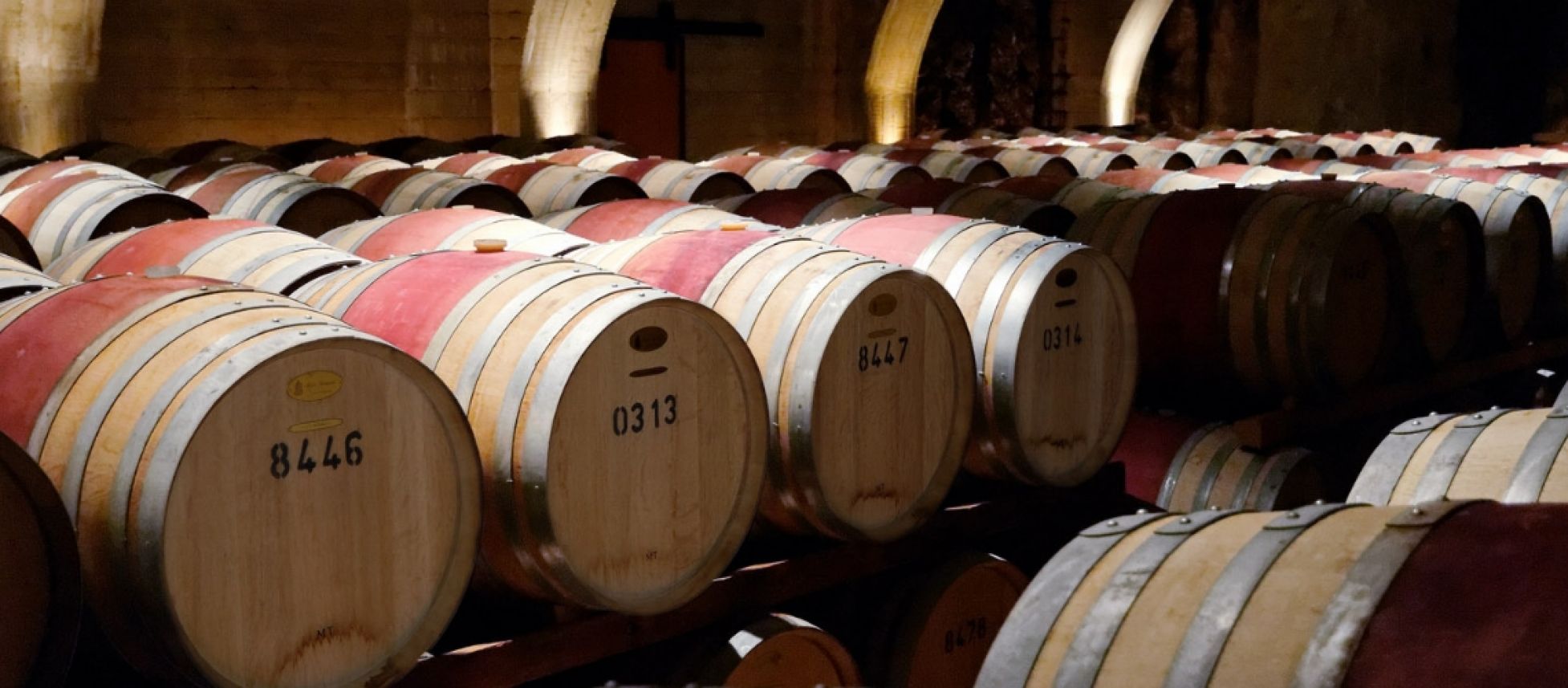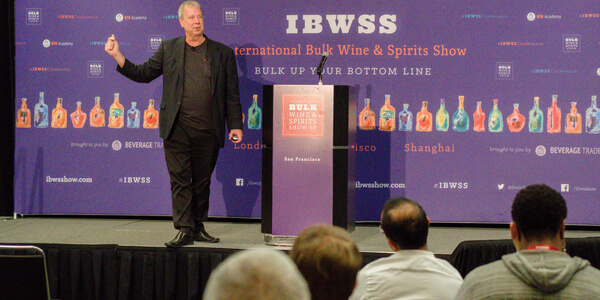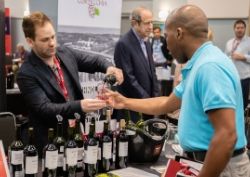Blog
Insights
Bulk Wine Financial Benchmarks

At IBWSS San Francisco Tim Hanni, Master of Wine and Speaker at Napa Wine Academy Talked about Bulk Wine Financial Benchmarks.
There are several different ways of viewing the wine industry, and the most successful participants in the industry are able to blend art, science, and business into one overarching view. While many winemakers focus on the aesthetics of their product – everything from the flavor profile of the wine to its packaging and labeling – it’s just as important to focus on the day-to-day business and financial factors. That was the primary focus of the presentation delivered by Tim Hanni, Master of Wine and Speaker at Napa Wine Academy, on Day 2 of the International Bulk Wine & Spirits Show in San Francisco.
Hanni first started out his presentation by taking a broad, macro-level view of the bulk wine market. “Bulk wine is not crap wine,” declared Hanni, as he discussed the various reasons why winemakers might want to get involved in bulk wine. He laid out the business case for both buying and selling bulk wine, emphasizing that many winemakers are already involved in the bulk business, even if they do not realize it. “If you are making wine, you are almost always blending wine,” says Hanni. For any winemaker trying to get ahead of new trends, or to find new uses for excess wine production, the bulk wine market represents a unique set of opportunities.
But if you are going to get started in bulk wine, says Hanni, you also have to understand basic financial realities, like costs, expenses, and sales channels. That means you really have to understand financial benchmarks in order to maximize profits. For example, you will need to optimize your cost of goods (which can include everything from materials used to make the wine itself to the packaging), allocate all of your expenses appropriately, and then optimize the cost of doing business via different sales channels. And it also means that you have to become better at forecasting future market conditions.

From there, it is important to understand the overall wine supply and value chain. Hanni represents this as a large pyramid, with grapes and production at the very top of the pyramid, and points of sale and consumers at the very base of the pyramid. How will you optimize every step of your supply and value chain, such that you can maximize your profit from every sale? Of course, notes Hanni, both buyers and sellers will have different perspectives on this pyramid structure. Most obviously, consumers will want to receive significant value (i.e. price savings) with every bottle sold, while wine sellers will want to keep their margins as high as possible with every sale.
The fundamental give-and-take between buyers and sellers, in fact, is why Hanni advises winemakers to become much more knowledgeable about key wine business drivers. These business drivers include all of the following:
• Supply and demand
• Global economic conditions
• Domestic economic conditions
• Exchange rates
• Taxes
• Consumer confidence
For example, what happens if your local economy is experiencing a financial pullback and you are still trying to sell $20 wines into the market? What happens if you are buying grapes from Argentina, and the nation starts to grapple with severe hyperinflation? Those factors are important to keep in mind, given the growing globalization of the bulk wine market.

The good news, says Hanni, is that bulk wine participants have plenty of options. For example, when it comes to sourcing wine, it is possible to grow or buy them. When it comes to production, it is possible to opt for a full production model or to contract out some (or even all) of the production. Even with the consolidation of distributors, you still have nearly 800 different options. And when it comes to the pointing of sale, you have on-premise, off-premise, and online.
However, as Hanni notes, adopting an online business model comes with its own share of risks. Two of the most popular models include wine clubs (in which consumers pay a monthly price to receive wines) and direct-to-consumer. “The No. 1 factor in direct-to-consumer is retention,” warns Hanni. Many people will sign up once, take advantage of any upfront bargains or sales, and then move on to the next offering. Thus, you really need to think about ways to make your business model as “sticky” as possible.

Moreover, when it comes to on-premise accounts, you need to make sure that you understand the fundamental business factors that these accounts are considering. For example, a winemaker might view wine education classes as a very impactful offering that will help a hotel or restaurant sell more wine. From the perspective of that same hotel or restaurant, however, these wine education classes are a tremendous waste of time and resources. In fact, says Hanni, these classes are sometimes viewed as “just a sales pitch.”
There are several key questions to ask, says Hanni, if you are looking to achieve best-in-class performance in the bulk wine market. First and most importantly, “Where can we reduce costs?” Secondly, “Where can we increase profits?” Thirdly, “How do we maintain control of our product and pricing?”
Keep in mind, says Hanni, that many trends that you see within the broader marketplace have a real financial reason behind them. For example, consider the trend toward un-oaked Chardonnay. There’s not a single consumer asking for un-oaked Chardonnay, says Hanni. The real reason why we are seeing this trend is that of the cost savings involved. In an un-oaked Chardonnay demo, Hanni shows how a $300,000 profit can transform into a $1.8 million profit, simply by changing the way the wine is brought to market.
Also, says Hanni, keep an eye out for trends that are starting to bubble up from the consumer. One of these is the customer preference for sweeter wines. Yet, until the appearance of the Moscato trend, this preference was largely ignored. And now, another trend that we are seeing says Hanni, is the consumer pushback against red blends. They are starting to question what makes one red blend different from another, and why they should be buying one in the first place.
Along the way, Hanni provides plenty of real-world examples that illustrate why financial benchmarks matter so much. For example, Yellow Tail is a great story of a brand that accidentally found its way into “billions of gallons of wine at a very cheap price.” Now, however, Yellow Tail is being forced to adjust as the price of its wine supply increases.
In short, getting involved in bulk wine is about more than just wine aesthetics or wine marketing – it is about getting a complete view of your product from a financial perspective, and then coming up with a business model to move that product in such a way that you can maximize both revenue and profitability.
If you're a bulk wine or bulk spirits supplier, contract bottler, or private label producer aiming to connect with serious trade buyers, IBWSS San Francisco is the event you can't afford to miss. Get a quotation or Book a exhibitor table.

